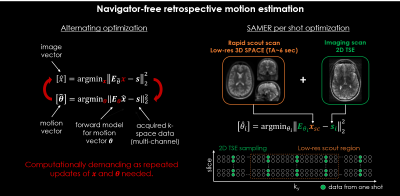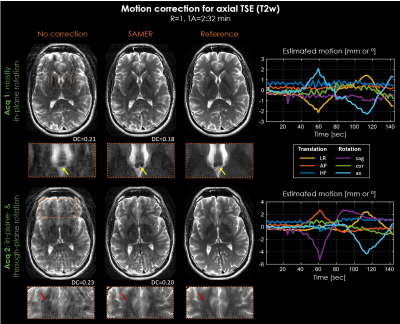Daniel Polak1,2, Daniel Nicolas Splitthoff1, Berkin Bilgic2,3,4, Lawrence L. Wald2,3,4, Kawin Setsompop5, and Stephen F. Cauley2,3,4
1Siemens Healthcare GmbH, Erlangen, Germany, 2Department of Radiology, A. A. Martinos Center for Biomedical Imaging, Charlestown, MA, United States, 3Department of Radiology, Harvard Medical School, Boston, MA, United States, 4Harvard-MIT Health Sciences and Technology, Massachusetts Institute of Technology, Cambridge, MA, United States, 5Department of Radiology, Stanford, Stanford, CA, United States
1Siemens Healthcare GmbH, Erlangen, Germany, 2Department of Radiology, A. A. Martinos Center for Biomedical Imaging, Charlestown, MA, United States, 3Department of Radiology, Harvard Medical School, Boston, MA, United States, 4Harvard-MIT Health Sciences and Technology, Massachusetts Institute of Technology, Cambridge, MA, United States, 5Department of Radiology, Stanford, Stanford, CA, United States
A
rapid 3D volumetric scout scan facilitates efficient estimation of 3D motion within
2D TSE imaging data. Using a 3D volumetric image reconstruction, our approach achieves
robust artifact reduction and was evaluated in-vivo for representative motion
trajectories.

Figure 1: Alternating
optimization is computationally demanding as repeated updates of the motion
vector θ and image estimate x are needed. SAMER speeds up the optimization by
utilizing a scout scan as an image prior xsc. This
avoids the need for repeated updates of x during the motion estimation. In this work,
SAMER is extended to 2D TSE imaging and motion parameters are estimated from a
low-resolution 3D SPACE scout. This is feasible as each shot of the imaging
scan (green circles) has common frequency overlap with the low-resolution scout
(dashed orange box).

Figure 4: In Acq. 1 (mostly in-plane
rotation), SAMER mitigated most motion artifacts, which allowed fine anatomical
structures, such as a blood vessel to be recovered (yellow arrow in zoom-in). The
image quality improvement is also reflected by a decrease in data-consistency
error (DC). In Acq 2. (through-plane rotation), SAMER also yielded robust
artifact reduction, however, the zoom-in shows a small loss of spatial
resolution (red arrow).
